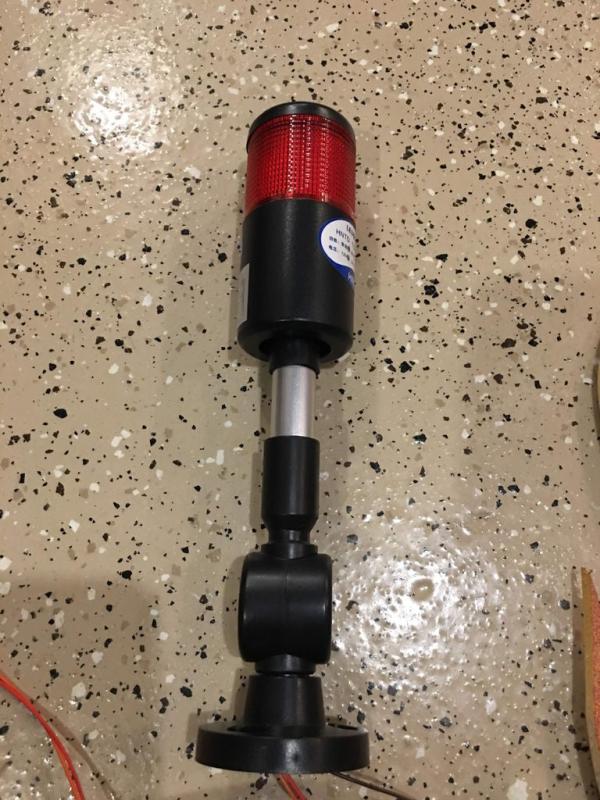
In this post we will briefly discuss Fire-Extinguisher-Simulator: The simulator was created because I watched a company spend quite a bit on money on training users with live fire extinguishers. I noted that the training had to be held outside to dissipate the CO2 release (weather) and there was a good size cost to re-filling the extinguishers each and every year.
I thought that there should be a way to save that money, and to not rely on good weather to accomplish this effort. While there are several commercially available products, since I do workshops on Arduino microprocessors at my local makerspace, why not find a way to use that knowledge and maybe some CNC and 3D printing to make something?
A simple overview is that this uses a real (empty) fire extinguisher with a flashlight in place of the cone at the end of the hose. The flashlight will hit photocells on a simulated PVC “fire”, and once swept across each sensor three (3) times a buzzer and flashing LED will indicate a completed effort. A user/trainee must simulate the real use by taking out the safety pin, closing the handle and sweeping the flashlight at the base of the simulated fire.
Steps to make Fire Extinguisher Simulator:
Step 1: Arduino Program
This code should be fairly easy to follow. I start by declaring the variables that I used to count “light hits”; variables for measuring the light bias – or relative ambient light around the flames. As the counter is added to, I test to see if the count reaches my threshold number (12) and then send you to a function that will ring the buzzer and light the LED.
I have commented the code, and also put in quite a few “Serial.print” and “Serial.println” to help you debug with the serial monitor as well.
My first thought was to use a laser pointer, but decided I would use a very bright flashlight and photocells to make this work, so you get a bigger swatch of light that goes to the photocells.
You could use an alternate item in place of the real fire extinguisher and build from scratch, but I wanted for this to seem fairly realistic.
I stated the effort by obtaining an out of date fire extinguisher from our safety team. We made sure it was empty, don’t do this work to a fully charged unit!
I removed the output tube of the unit, and then examined the handles and the safety pin, then figured out where I could put in a switch.
This part of the effort required drilling out the valve section to thread the wiring through. You could wire around this area,but I felt like the wires could more easily be broken during use if you went that route. I wanted to make a product that would last through several years of use.
